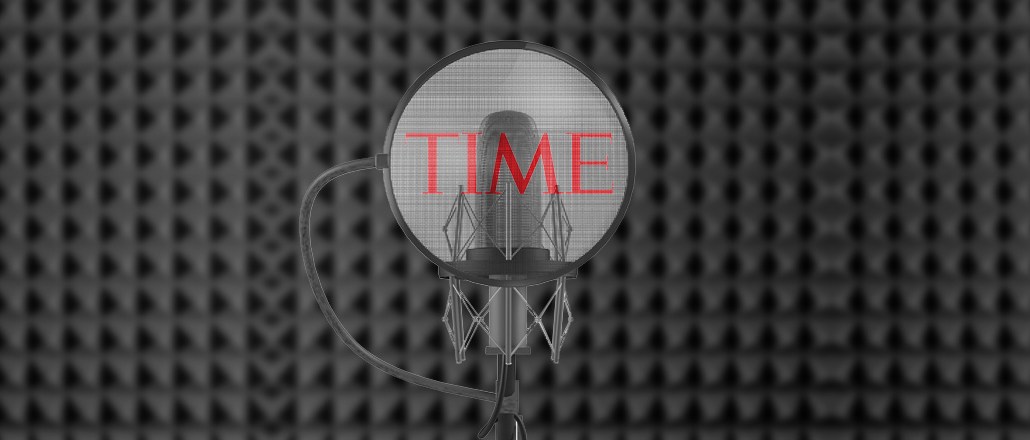Save 50% on a 3-month Digiday+ membership. Ends Dec 5.

Digital media is going back to the future by channeling the early days of radio by giving digital visitors the option of having the news read to them.
Case in point is Time magazine. It’s among a handful of publishers — including The Economist, Forbes and Quartz — that have been creating audio versions of their publications. Basically, a professional voice actor reads stories or, in the cast of The Economist, the entire edition, which is a seven-hour experience.)
In October, Time took the idea a step further and created an audio version of its entire daily newsletter, The Brief. The Brief audio episodes last 20 to 25 minutes, and in April, people listened for an average of 16 minutes per session, with mobile listeners averaging 14 minutes — an eternity in mobile time. (Time didn’t say what percentage of newsletter recipients opted to listen to the newsletter.)
“In an era of fly-by audiences and social media and people consuming much fewer articles per session, for people to be listening to five-plus articles and for 16 minutes, that’s tremendous,” said Callie Schweitzer, editorial director of audience strategy for Time and Time Inc. “This kind of engagement really dispels the myth of mobile.”
SpokenLayer, which creates Time’s audio version, is working with other publishers, including E.W. Scripps TV stations and Ozy.com. Ozy created an audio version of its Presidential Daily Brief newsletter, so people can listen to it in the car and at the gym, said Aneesh Raman, Ozy’s vp of marketing and audience development.
“It goes to the idea that all media companies have to be cognizant of, which is to give people all opportunities to consume your content in whatever way possible,” Raman said.
Much has been made of the growth of podcast listening, which gained attention with the breakthrough hit crime drama “Serial” from WBEZ. Like podcasts, audio versions of articles benefit from the shift to mobile devices, which let people listen on demand and on the go, and often with fewer distractions from other media.
Ad position: web_incontent_pos1
“It’s a natural evolution of seeing audio become vital to consumption on mobile overall, and it’s complementary to producing original audio,” said Jake Shapiro, CEO of PRX, which operates the Radiotopia podcast network.
But while original podcasts can take substantial time and money, spoken versions of articles are cheap ways for publishers to get more value out of their already-existing content — even if hearing printed articles read aloud isn’t the most entertaining way to get the news. Publishers already have big pools of articles to start with and are being adding to them daily. Podcasts can take several people days or weeks, but one person can record an article in about seven minutes, according to Will Mayo, CEO of SpokenLayer. He wouldn’t say how much he charges publishers, but said it varies depending on how much content they’re creating and the implementations required.
But Time isn’t just interested in bringing in new readers and increasing engagement for their own sake. It sees the audio edition as another way to make money off its content. Since media companies often don’t have the ability to sell audio, SpokenLayer offers to handle all the selling and creative for advertising in the audio inventory it creates.
When it comes to selling ads in audio, spoken articles share the advantages of podcasts — and disadvantages. Audio is a way for advertisers to reach people on mobile without the small-screen-size problem, and with few distractions. Hence the CPMs are higher. That’s why Slate can get $25 to $50 CPMs for its podcasts.
But the scale isn’t there yet. Podcasting accounts for just 2 percent of time spent audio listening, according to Edison Research. And measuring it means counting downloads, plays and subscribers across many third-party apps. Similarly, the audio version of Time’s The Brief is distributed on Time.com as well as Stitcher, AudioBoom, iTunes Podcasts and SoundCloud (as well as on the Apple Watch on launch day).
Ad position: web_incontent_pos2
People also tend not to share audio versions as they do with video, which helps publishers do their promotion for them. And few advertisers have the creative assets needed to do audio advertising, which is why The Economist just treats its audio edition as a subscriber benefit and not as an audience builder or advertising vehicle, said Paul Rossi, president of The Economist Group. He estimated that less than 20 percent of The Economist subscribers listen to the audio edition.
But spoken articles might be poised to have a moment if they can be aggregated, following the rise of podcast listening and podcast ad sales networks.
“There’s incredibly good information tied up in all these print and text articles, which are inaccessible to people unless they’re looking at their screen,” Shapiro said. “The audio opportunity is to pry them loose when they’re not looking at their screen.”
More in Media

Digiday+ Research Subscription Index 2025: Subscription strategies from Bloomberg, The New York Times, Vox and others
Digiday’s third annual Subscription Index examines and measures publishers’ subscription strategies to identify common approaches and key tactics among Bloomberg, The New York Times, Vox and others.

From lawsuits to lobbying: How publishers are fighting AI
We may be closing out 2025, but publishers aren’t retreating from the battle of AI search — some are escalating it, and they expect the fight to stretch deep into 2026.

Media Briefing: Publishers turn to vertical video to compete with creators and grow ad revenue in 2026
Publishers add vertical video feeds to their sites to boost engagement, attract video ad spend and compete with news creators.
Ad position: web_bfu





